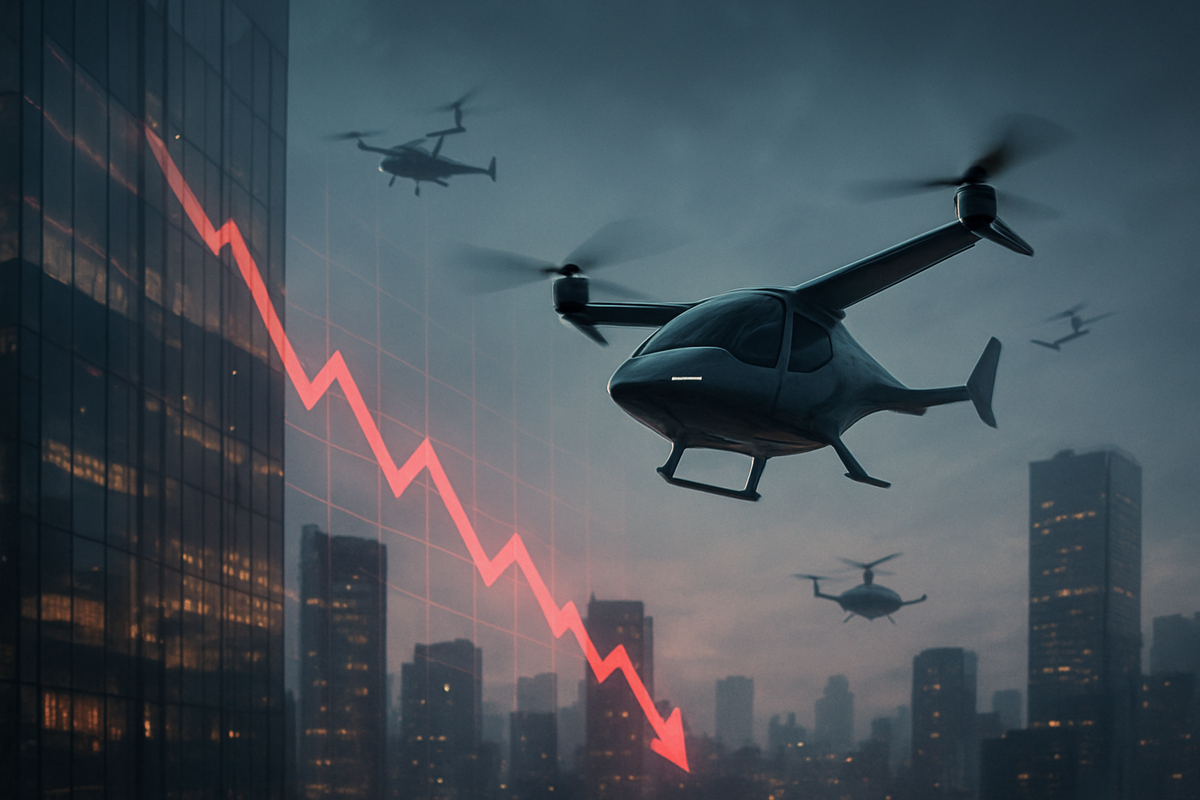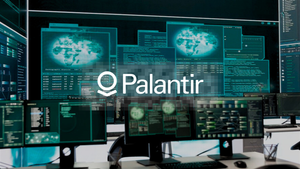
Archer Aviation (NYSE: ACHR), a prominent player in the nascent electric vertical takeoff and landing (eVTOL) aircraft industry, saw its stock price dip by 3.2% on November 12, 2025, following a price target reduction from Canaccord Genuity. This latest move adds to a series of analyst adjustments that have put pressure on the company's shares throughout the week, raising questions about its near-term valuation and long-term prospects. The downturn underscores increasing investor scrutiny and market volatility for the pre-revenue company, which is navigating the complex path toward commercialization.
The immediate implications for Archer Aviation are multifaceted. The lowered price targets, even from firms maintaining a "Buy" rating, signal a more cautious outlook on the stock's growth trajectory. This sentiment is further amplified by JPMorgan Chase & Co.'s earlier downgrade to "Neutral" on November 7, 2025. Such analyst actions often lead to increased investor apprehension, particularly for companies like Archer that rely heavily on future potential and successful execution of critical milestones, including FAA certification and capital allocation strategies. The heightened trading volume accompanying these price movements reflects a market grappling with Archer's current valuation amidst its significant operating expenses and ongoing net losses.
Detailed Coverage of the Event
On November 12, 2025, Archer Aviation (NYSE: ACHR) experienced a 3.2% drop in its stock price, closing at $8.6550, down from $8.94. This decline was primarily attributed to Canaccord Genuity, with analyst Austin Moeller, lowering their price target for ACHR from $13.00 to $12.00, while maintaining a "Buy" rating. The trading session saw a substantial increase in volume, with over 95 million shares exchanged, significantly higher than the average. This event on November 12th was not isolated but rather the latest in a series of analyst adjustments that commenced earlier in the week.
The preceding week, specifically November 7, 2025, proved to be more impactful for Archer's stock. On that day, the shares plummeted by 7.7%, driven by two significant analyst actions. JPMorgan Chase & Co.'s analyst, Bill Peterson, downgraded Archer Aviation from a previous "Neutral" rating with a higher price target of $10.00 (raised on August 1, 2025, from $9.00) to a "Neutral" rating with a significantly reduced price target of $8.00. Concurrently, Needham & Company LLC, through analyst Chris Pierce, maintained a "Buy" rating but slashed its price target from $13.00 to $10.00. These combined actions led to the stock gapping down at market open, trading as low as $7.20 before closing around $8.1950. The trading volume on this day surged to over 153 million shares, indicating intense market reaction.
These analyst downgrades and price target reductions stem from a confluence of factors, primarily concerning Archer Aviation's financial performance and the inherent risks associated with its pre-revenue stage. The company's recent Q3 results revealed a wider-than-expected net loss and escalating operating expenses, pushing profitability further into the future. Analysts are increasingly scrutinizing Archer's capital allocation strategy and the formidable challenge of achieving FAA certification for its eVTOL aircraft. These milestones are considered critical, and any delays or missteps could severely impact the company's valuation, which many analysts already perceive as stretched due to negative earnings and speculative growth projections.
The key players involved in these recent market movements are the investment banks and their analysts—Canaccord Genuity (Austin Moeller), JPMorgan Chase & Co. (Bill Peterson), and Needham & Company LLC (Chris Pierce)—who provide crucial market guidance. Archer Aviation (NYSE: ACHR) itself is the central stakeholder, directly impacted by the shifting market sentiment. Investors, both institutional and retail, are reacting to these analyst reports, leading to the observed volatility. The initial market reaction has been one of caution and increased selling pressure, highlighting the sensitivity of growth-stage companies to expert opinions, especially in a capital-intensive and highly regulated industry like eVTOLs.
Companies That Might Win or Lose from the Event
The recent analyst downgrades and stock price decline for Archer Aviation (NYSE: ACHR) send ripple effects across the nascent, yet highly competitive, eVTOL aircraft industry, impacting both direct rivals and strategic partners. In this high-stakes environment, where capital intensity and regulatory hurdles are significant, some players may see their positions strengthened while others face increased scrutiny or delayed benefits.
Among the potential beneficiaries, Joby Aviation (NYSE: JOBY) stands out as a likely winner. Widely regarded as a frontrunner in the eVTOL race, Joby has made significant strides in its FAA certification process and boasts a more extensive flight testing program, with over 1,000 test flights completed. While Joby's stock has also experienced volatility inherent to the sector, Archer's setbacks, particularly regarding certification timelines and dilution concerns from its recent direct offering, could lead investors to view Joby as a more stable and advanced investment. This potential shift in investor preference could solidify Joby's competitive advantage in attracting further capital and securing early market share.
Another company that could potentially benefit is EHang Holdings (NASDAQ: EH). This Chinese eVTOL developer has already achieved critical regulatory certifications (Type Certificate, Production Certificate, and Airworthiness Certificate) from the CAAC in China for its EH216-S model, and claims to be the first globally to launch commercial, passenger-carrying eVTOL operations. While operating in a different regulatory landscape, Archer's certification delays in Western markets might draw more investor attention to EHang's demonstrated operational success and revenue-generating flights, potentially highlighting a "massive valuation gap" that could be closed if investors seek tangible, near-term commercialization over speculative future growth.
Conversely, several companies face potential losses or increased challenges. Lilium N.V. (NASDAQ: LILM), a German eVTOL developer, serves as a stark warning, having filed for insolvency in October 2024 and ceased operations in February 2025 due to unresolved financial challenges. Archer's acquisition of Lilium's entire patent portfolio in October 2025 underscores the intense consolidation within the industry, where financially robust players absorb the intellectual property of those that fail. Similarly, Vertical Aerospace (NYSE: EVTL), another eVTOL developer, is grappling with significant financial hurdles, including a low cash balance, high projected cash burn, and a delayed certification timeline. Archer's recent dilution event and stock decline could reinforce negative sentiment around similarly capital-intensive eVTOL companies like Vertical, making it even harder for them to secure necessary funding and maintain investor confidence.
Strategic partners like United Airlines (NASDAQ: UAL) and Stellantis (NYSE: STLA) also face implications. United Airlines, a significant investor and flagship customer with an order for up to $1.5 billion worth of Archer's eVTOL aircraft, could see its plans to launch air taxi services delayed due to Archer's revised timelines for aircraft deliveries and UAE certification, now projected for late 2026. While the eVTOL sector is a relatively small part of United's vast operations, sustained delays could diminish its first-mover advantage in urban air mobility. Stellantis, a major equity investor and contract manufacturing partner for Archer, also faces risks. While committed to the partnership, Stellantis's own financial challenges, including a reported $2.68 billion loss in the first half of 2025 and strategic shifts, raise questions about its long-term capacity to fully support Archer's manufacturing ramp-up. Any reduction in support could significantly impede Archer's progress and, by extension, Stellantis's role as a leading manufacturing partner in the nascent eVTOL industry.
Wider Significance
The recent analyst downgrades and subsequent stock price decline for Archer Aviation (NYSE: ACHR) are not isolated incidents but rather a microcosm of the systemic challenges and opportunities facing the broader electric Vertical Take-Off and Landing (eVTOL) aircraft industry. This event underscores the inherent volatility and speculative nature of investing in nascent, capital-intensive technologies that are still years away from widespread commercialization.
This downturn fits squarely into broader industry trends characterized by intense competition, high development costs, and the formidable hurdle of regulatory certification. The eVTOL sector, while promising a revolution in urban air mobility, is grappling with significant financial demands. Developing and certifying a single eVTOL model can exceed $1.5 billion, with global scaling potentially requiring tens of billions. This capital intensity leads to inflated valuations and makes companies highly susceptible to investor sentiment shifts, as evidenced by Archer's significant stock pullbacks. The trend of consolidation, exemplified by Archer's acquisition of the patent portfolio from the now-defunct German eVTOL competitor Lilium, is a clear indicator that only the most robust and well-funded players are likely to survive this demanding phase.
The ripple effects on competitors and partners are substantial. While leading players like Joby Aviation (NYSE: JOBY) might gain investor confidence by appearing relatively more advanced in their certification journey, the overall sentiment towards the entire eVTOL sector can become more cautious. This increased scrutiny on financial health, cash burn rates, and realistic timelines will likely extend to all companies in the space, potentially leading to increased volatility across the board. Partners such as United Airlines (NASDAQ: UAL) and Stellantis (NYSE: STLA), who have invested heavily in Archer, face the prospect of delayed returns on their investments and a longer wait for the integration of eVTOL technology into their respective business models. Any sustained setbacks for a prominent player like Archer could also influence other potential strategic alliances and investment decisions across the broader aerospace and automotive sectors.
Regulatory and policy implications are also paramount. While the Federal Aviation Administration (FAA) in the U.S. and the European Union Aviation Safety Agency (EASA) have made significant strides in establishing regulatory frameworks for eVTOLs—such as the FAA's Advisory Circular (AC) 21.17-4 published in July 2025—certification remains a rigorous, multi-year process. Archer's delays highlight that even with clearer guidelines, the path to commercial operation is arduous. The differing paces of regulation in various global regions, with some like China and the Middle East exhibiting more agile environments, could create an uneven playing field, potentially allowing companies operating in less restrictive markets to gain an early operational edge. This pressure could, in turn, accelerate or further complicate regulatory harmonization efforts between international aviation authorities.
Historically, the emergence of disruptive transportation technologies, from early automobiles and commercial aircraft to the internet, has always been characterized by periods of intense speculation, rapid growth, and subsequent corrections. The "dot-com bubble" of the late 1990s, where many internet companies with speculative valuations failed, offers a relevant comparison. The eVTOL sector, with its initial surge in Special Purpose Acquisition Company (SPAC) investments, shares similarities in experiencing inflated valuations and market instability. The current consolidation and the emphasis on tangible progress towards certification and profitability are reminiscent of the shakeout phases in these earlier technological revolutions, where only a few dominant designs and financially sound companies ultimately emerged to define the future of their respective industries.
What Comes Next
Following the recent analyst downgrade and stock price dip, Archer Aviation (NYSE: ACHR) stands at a critical juncture, with its immediate future heavily reliant on achieving key operational milestones and adapting to the dynamic eVTOL landscape. In the short term, the company is expected to face continued stock price volatility and intense scrutiny regarding its cash burn rate and the highly anticipated FAA Type Certification for its Midnight eVTOL aircraft. Archer is aiming for this pivotal approval by late 2025 or early 2026, with the first aircraft delivery to Abu Dhabi anticipated in the second half of 2025. Any further delays in these timelines could significantly impact investor confidence and market sentiment. The successful integration of its recently acquired Hawthorne Airport in Los Angeles as a strategic vertiport hub will also be a critical, immediate challenge requiring careful regulatory navigation and community engagement.
Looking further ahead, Archer Aviation's long-term trajectory involves a dual strategy of commercial launch and defense market expansion. The company targets full-scale passenger flights by 2028, contingent upon securing all necessary certifications, developing robust infrastructure, and establishing efficient fleet systems. Its substantial order book, including backing from United Airlines (NASDAQ: UAL) and manufacturing expertise from Stellantis (NYSE: STLA), provides a foundation for scaling. A significant strategic pivot involves expanding into the defense market through a partnership with Anduril Industries to co-develop hybrid, autonomous VTOL military aircraft. This dual-use strategy could provide high-margin government contracts, diversify revenue streams, and potentially accelerate technological advancements, tapping into an estimated $13.4 billion annual market for autonomous military systems. Archer also aims for global market penetration, with plans for commercial services in the UAE and expansion into other regions across America, Africa, and Asia, underpinned by partnerships such as the one with Soracle in Japan.
To navigate the current challenges and seize emerging opportunities, Archer Aviation may need to implement several strategic adaptations. Optimized capital allocation will be paramount, requiring a focus on prudent financial management, prioritizing high-impact projects, and potentially seeking additional non-dilutive funding to extend its cash runway amidst persistent cash burn. Streamlining the certification process through closer collaboration with regulatory bodies like the FAA will be crucial to mitigate delays. Furthermore, accelerating the development of vertiport infrastructure and charging solutions, possibly through strategic alliances with real estate developers or existing aviation hubs, will be vital for scaling operations. Continued advancements in battery technology, hybrid propulsion systems, lightweight materials, and AI integration for fleet management will also be essential to maintain a competitive edge and reduce operational costs.
Potential scenarios for Archer Aviation range from optimistic growth, where it achieves early certification, rapidly scales commercial and defense operations, and reaches profitability by 2028, to a more challenging outcome involving prolonged certification delays, persistent high cash burn, and significant financial strain that could lead to a scaled-back operation or even acquisition. For the broader eVTOL industry, the coming years could see a transformative expansion with widespread adoption of urban air mobility, a more gradual integration into niche markets, or even stagnation if regulatory hurdles and economic viability challenges prove too formidable. Archer's path forward requires a delicate balance of innovation, regulatory navigation, financial discipline, and strategic market positioning within this rapidly evolving and highly speculative industry.
Comprehensive Wrap-up
The recent analyst downgrade and subsequent 3.2% dip in Archer Aviation's (NYSE: ACHR) stock price on November 12, 2025, serves as a potent reminder of the inherent volatility and intense scrutiny facing companies in the nascent eVTOL aircraft industry. This event is not merely a transient market fluctuation but a critical juncture, highlighting the delicate balance between ambitious long-term visions and the immediate financial realities and execution challenges of bringing a revolutionary technology to market.
The key takeaways from this period underscore the ongoing recalibration of investor expectations. Analyst firms, including Canaccord Genuity, JPMorgan Chase & Co., and Needham & Company LLC, have adjusted price targets, reflecting a more cautious outlook on the pace and cost of commercialization. While Archer's Q3 results showed a narrower-than-expected loss, concerns over significant cash burn and potential share dilution from a recent $650 million equity offering, aimed at funding the strategic acquisition of Hawthorne Municipal Airport, continue to weigh on sentiment. These developments emphasize that despite promising partnerships and technological advancements, the path to profitability for pre-revenue eVTOL companies remains extended and capital-intensive.
Moving forward, the market will assess Archer Aviation with a discerning eye, balancing its strategic investments and technological progress against its financial trajectory. The consensus among analysts, though still leaning towards a "Moderate Buy," reflects a divergence in opinion, underscoring the speculative nature of the eVTOL market. The stock is likely to remain volatile as investors look for concrete evidence of an accelerated path to revenue generation and efficient capital management. The broader eVTOL sector will also continue to experience consolidation, with stronger players absorbing the intellectual property and market share of those unable to sustain the rigorous development and certification process.
The lasting impact of these events will depend on Archer's ability to swiftly translate its strategic partnerships and technological advancements into tangible commercial operations and a clear path to profitability. This period signals a shift where the market is increasingly demanding concrete milestones and financial discipline over initial hype. It underscores that for disruptive technologies, the journey from innovation to widespread adoption is often fraught with challenges, requiring resilience, adaptability, and unwavering execution.
For investors in the coming months, vigilance will be key. Closely monitor Archer's progress on FAA Type Certification for its Midnight aircraft, which remains the single most critical hurdle. Watch for any definitive timelines or initial revenue streams from commercial operations, particularly from its Abu Dhabi delivery and the integration of Hawthorne Airport. Scrutinize the company's cash burn rate and liquidity management, paying attention to the efficient deployment of its recently bolstered capital. Finally, observe the Q4 earnings report for further insights into operational efficiency and cost control. Ultimately, Archer Aviation's journey is one of immense potential coupled with significant execution risk, and the coming months will be pivotal in demonstrating its capability to navigate these complexities and solidify its position in the future of urban air mobility.
This content is intended for informational purposes only and is not financial advice





